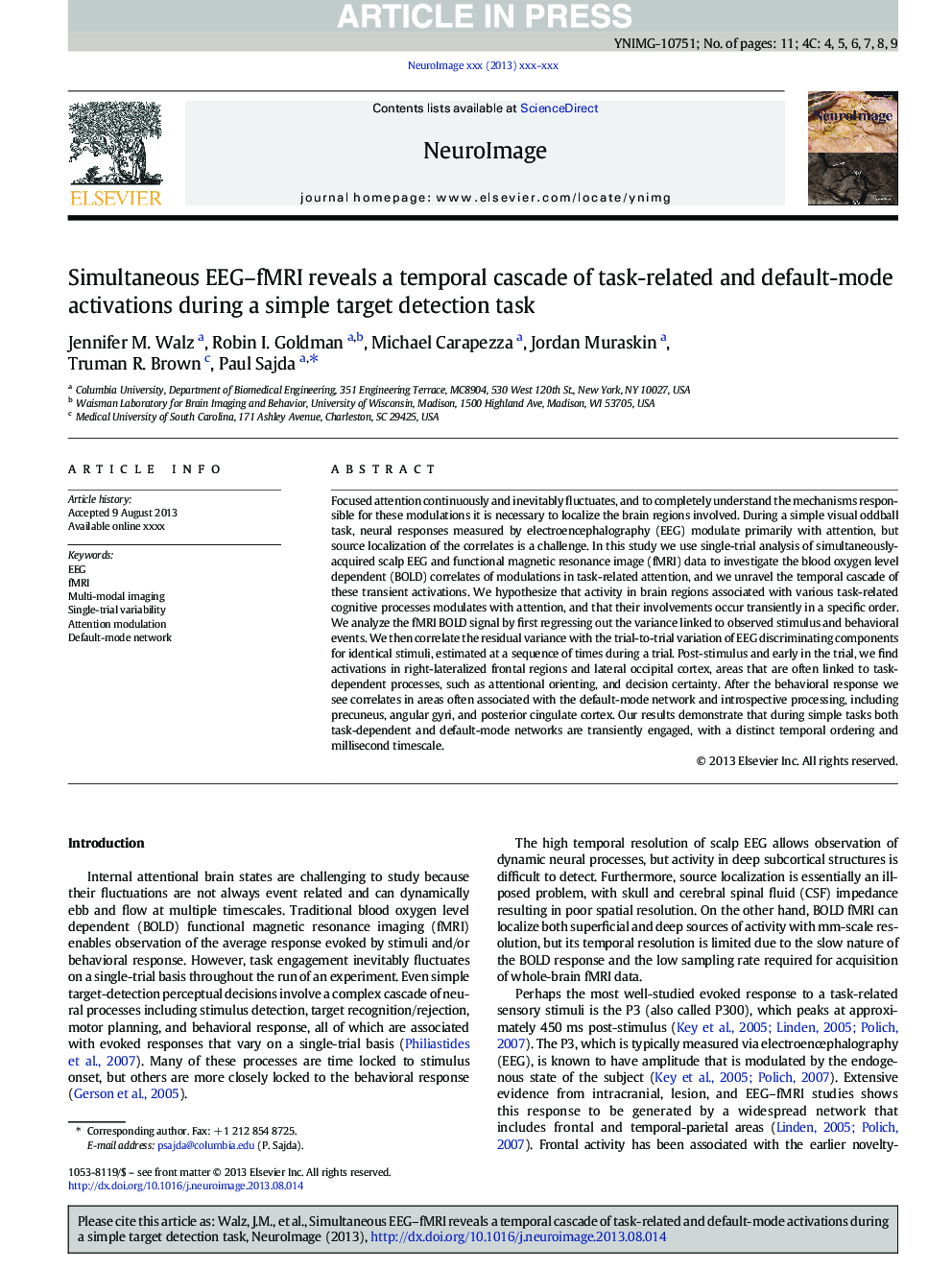| Article ID | Journal | Published Year | Pages | File Type |
|---|---|---|---|---|
| 6026252 | NeuroImage | 2014 | 11 Pages |
Abstract
Focused attention continuously and inevitably fluctuates, and to completely understand the mechanisms responsible for these modulations it is necessary to localize the brain regions involved. During a simple visual oddball task, neural responses measured by electroencephalography (EEG) modulate primarily with attention, but source localization of the correlates is a challenge. In this study we use single-trial analysis of simultaneously-acquired scalp EEG and functional magnetic resonance image (fMRI) data to investigate the blood oxygen level dependent (BOLD) correlates of modulations in task-related attention, and we unravel the temporal cascade of these transient activations. We hypothesize that activity in brain regions associated with various task-related cognitive processes modulates with attention, and that their involvements occur transiently in a specific order. We analyze the fMRI BOLD signal by first regressing out the variance linked to observed stimulus and behavioral events. We then correlate the residual variance with the trial-to-trial variation of EEG discriminating components for identical stimuli, estimated at a sequence of times during a trial. Post-stimulus and early in the trial, we find activations in right-lateralized frontal regions and lateral occipital cortex, areas that are often linked to task-dependent processes, such as attentional orienting, and decision certainty. After the behavioral response we see correlates in areas often associated with the default-mode network and introspective processing, including precuneus, angular gyri, and posterior cingulate cortex. Our results demonstrate that during simple tasks both task-dependent and default-mode networks are transiently engaged, with a distinct temporal ordering and millisecond timescale.
Related Topics
Life Sciences
Neuroscience
Cognitive Neuroscience
Authors
Jennifer M. Walz, Robin I. Goldman, Michael Carapezza, Jordan Muraskin, Truman R. Brown, Paul Sajda,
